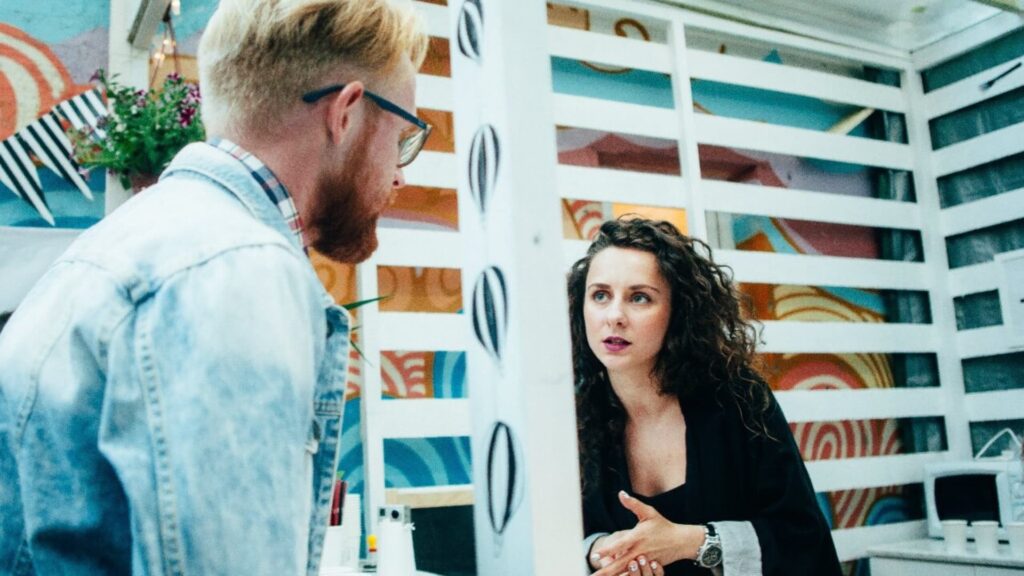Good communicators have a few things in common: They speak clearly and concisely, show empathy and they use open, inviting body language.
They also know the power of good eye contact, according to executive coach and public speaking consultant Bill McGowan.
Eye contact is “enormously important,” whether you’re having a one-on-one conversation or giving a TED Talk in front of hundreds of people, McGowan tells CNBC Make It. The skill helps you exude confidence and boosts your credibility and authenticity, especially when you’re in a professional setting.
Darting your eyes across the audience or looking up to the sky, figuring out what you’ll say next, can make you look anxious and doubtful, he adds.
“We break eye contact because we like to have mental privacy to think about what it is we want to say next, and looking at the other person staring at you doesn’t give you that privacy,” says McGowan, author of “Speak, Memorably: The Art of Captivating an Audience.” “So that’s why we’ll look at the pattern on the carpet, or we’ll look at the tiles in the ceiling. We’ll look anywhere to give us that privacy of thought.”
That doesn’t mean you should unwaveringly gaze in someone’s eyes during your next conversation or presentation — that can make you come off “robotic,” Columbia Business School professor and communication expert Michael Chad Hoeppner said last month. Focus on making eye contact meaningful instead of constant, he added.
If someone is sharing a secret or being vulnerable, for example, you’ll want to be attentive and show empathy. If you’re having a casual chat, however, staring too intently can become uncomfortable. In other words, read the room and adjust your focus accordingly.
How to show confidence as an introvert
“People who are shy and introverted have a harder time with eye contact than extroverts,” says McGowan. “But [you can] improve your eye contact in a way that still keeps you in your comfort zone.”
McGowan tells his more introverted clients to pick a spot around a person’s eyes to look at to make meaningful connections, especially if you’re speaking to an audience.
“It could be an earring that somebody’s wearing. It could be the knot on a necktie a man’s wearing, or the top button of someone’s shirt, or their earlobe,” he says. “Zero in on that when you’re talking to them, and that is going to give you all the privacy that you would get from looking at the ceiling and looking at the floor.”
The same applies for meetings on Zoom or Microsoft Teams, where staring at your webcam instead of people’s faces on the screen can be difficult. McGowan even advises people to print out a picture of someone you’re comfortable with and tape it on your computer, with a hole cut out for the webcam.
“The other person will never know that you’re not looking at them directly,” he says. “That’s the virtual equivalent of eye contact.”
Are you ready to buy a house? Take Smarter by CNBC Make It’s new online course How to Buy Your First Home. Expert instructors will help you weigh the cost of renting vs. buying, financially prepare, and confidently navigate every step of the process—from mortgage basics to closing the deal. Sign up today and use coupon code EARLYBIRD for an introductory discount of 30% off $97 (+taxes and fees) through July 15, 2025.
Plus, sign up for CNBC Make It’s newsletter to get tips and tricks for success at work, with money and in life, and request to join our exclusive community on LinkedIn to connect with experts and peers.


